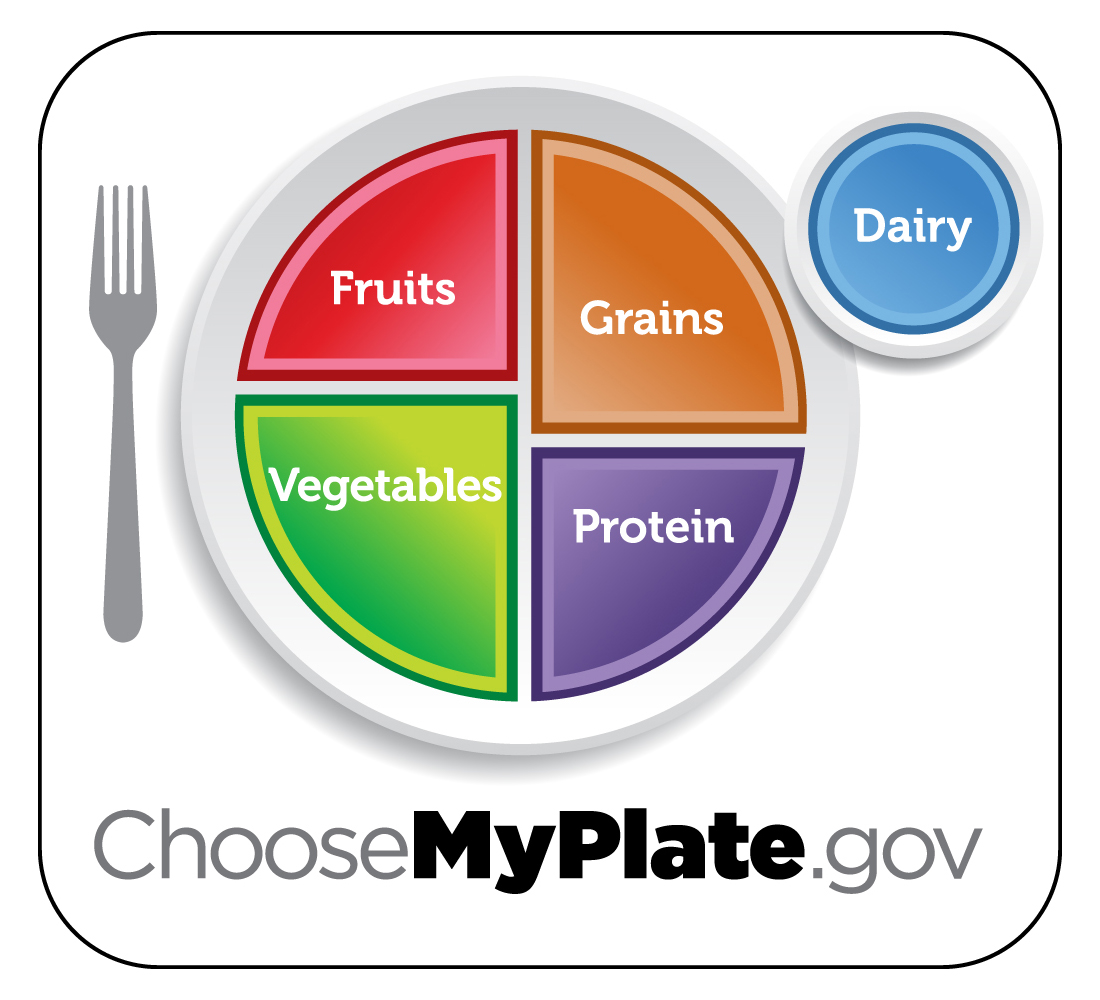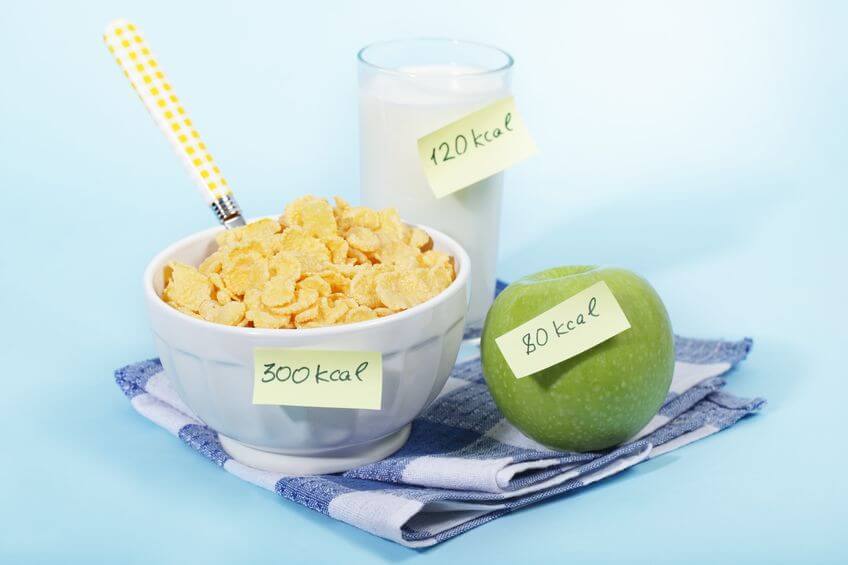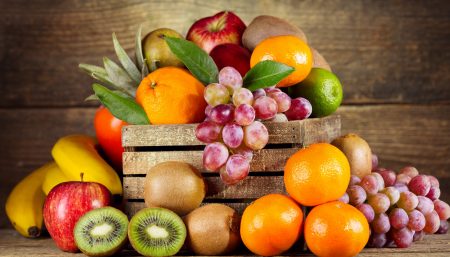
Health experts supports a low-fat, plant-based diet for optimal health. The American Dietetic Association (ADA), the largest organization of nutrition experts, states that “vegetarian diets, including total vegetarian or vegan diets, are healthful, nutritionally adequate, and may provide health benefits in the prevention and treatment of certain diseases. Well-planned vegetarian diets are appropriate for individuals during all stages of the lifecycle, including pregnancy, lactation, infancy, childhood, and adolescence, and for athletes.”
Keeping in line the United States Department of Agriculture (USDA) recently released “My plate,” that gives a graphic representation of the mealtime configuration of food. What we get see is a circular plate divided into four sections representing four food groups: vegetables (green sector), grains (orange), fruits (red), protein (purple). The dairy group is represented by a small blue circle next to the plate; intended to illustrate a glass of fat-free or low-fat milk, or cup of yogurt.
Vegetables represent the largest sector on the plate. Together, fruits and vegetables represent half the plate; grains and “protein” each represent less than one quarter of the plate. What makes the protein group unique is that protein is a nutrient, but has always been grouped as a food.
The plate as a guide is a huge shift. The plate encourages whole grains over refined grains, but does not discourage carbohydrate intake.
To go along with the new icon, there is a new set of guidelines. Some of these new guidelines are:
Balancing Calories:

- Enjoy your food, but eat less.
- Avoid oversized portions.
Foods to Increase:
- Make half your plate fruits and vegetables.
- Make at least half your grains whole grains.
- Switch to fat-free or low-fat (1%) milk.
Foods to Reduce
- Compare sodium in foods like soup, bread, and frozen meals ― and choose the foods with lower numbers.
- Drink water instead of sugary drinks.
The plate icon advises all to limit high-fat products like meat and cheese. The protein portion of the USDA’s MyPlate is unnecessary, because beans, whole grains, and vegetables are loaded with it. And MyPlate reserves a special place for dairy products, which are packed with fat and cholesterol and may increase the risk of health problems ranging from asthma to some types of cancer. There are many more healthful sources of calcium.
To learn more check out ChooseMyPlate.gov
Disclaimer
The Content is not intended to be a substitute for professional medical advice, diagnosis, or treatment. Always seek the advice of your physician or other qualified health provider with any questions you may have regarding a medical condition.



